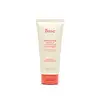What's inside
What's inside
 Key Ingredients
Key Ingredients

 Benefits
Benefits

 Concerns
Concerns

 Ingredients Side-by-side
Ingredients Side-by-side

Xanthan Gum
EmulsifyingCeramide NP
Skin ConditioningPhytosphingosine
Skin ConditioningCholesterol
EmollientCarbomer
Emulsion StabilisingCitric Acid
BufferingWater
Skin ConditioningGlycerin
HumectantCocamidopropyl Betaine
CleansingSodium PCA
HumectantSodium Chloride
MaskingDisodium EDTA
Propylene Glycol
HumectantPotassium Sorbate
PreservativeSodium Benzoate
MaskingPhenoxyethanol
PreservativeSodium C14-16 Olefin Sulfonate
CleansingCentella Asiatica Extract
CleansingCeramide AP
Skin ConditioningCeramide EOP
Skin ConditioningSodium Lauroyl Lactylate
EmulsifyingTriethylene Glycol
MaskingXanthan Gum, Ceramide NP, Phytosphingosine, Cholesterol, Carbomer, Citric Acid, Water, Glycerin, Cocamidopropyl Betaine, Sodium PCA, Sodium Chloride, Disodium EDTA, Propylene Glycol, Potassium Sorbate, Sodium Benzoate, Phenoxyethanol, Sodium C14-16 Olefin Sulfonate, Centella Asiatica Extract, Ceramide AP, Ceramide EOP, Sodium Lauroyl Lactylate, Triethylene Glycol
Water
Skin ConditioningCocamidopropyl Betaine
CleansingPotassium Cocoyl Glycinate
Arginine
MaskingRosmarinus Officinalis Extract
AntimicrobialAvena Sativa Kernel Extract
AbrasiveTremella Fuciformis Extract
HumectantCeramide Ns
Skin ConditioningCeramide NP
Skin ConditioningCeramide Eos
Skin ConditioningCeramide EOP
Skin ConditioningCeramide As
Skin ConditioningCeramide AP
Skin ConditioningCentella Asiatica Extract
CleansingAloe Barbadensis Extract
Skin ConditioningDatem
EmollientLactobacillus/Rice Ferment
Skin ConditioningSaccharomyces Ferment Lysate Filtrate
Skin ConditioningLactococcus Ferment Lysate
Skin ConditioningDMDM Hydantoin
PreservativeWater, Cocamidopropyl Betaine, Potassium Cocoyl Glycinate, Arginine, Rosmarinus Officinalis Extract, Avena Sativa Kernel Extract, Tremella Fuciformis Extract, Ceramide Ns, Ceramide NP, Ceramide Eos, Ceramide EOP, Ceramide As, Ceramide AP, Centella Asiatica Extract, Aloe Barbadensis Extract, Datem, Lactobacillus/Rice Ferment, Saccharomyces Ferment Lysate Filtrate, Lactococcus Ferment Lysate, DMDM Hydantoin
Ingredients Explained
These ingredients are found in both products.
Ingredients higher up in an ingredient list are typically present in a larger amount.
Centella Asiatica Extract (Centella) is derived from an herb native to Southeast Asia. It is famous for its anti-inflammatory and soothing properties.
Centella is rich in antioxidants and amino acids, such as Madecassic Acid and Asiaticoside.
Studies show the compounds in centella help with:
The combination of all these properties makes centella effective at soothing, hydrating, and protecting the skin.
Other great components of centella include Vitamin A, vitamin C, several B vitamins, and Asiatic Acid.
Fun fact: Centella has been used as a medicine and in food for many centuries. As a medicine, it is used to treat burns, scratches, and wounds.
Learn more about Centella Asiatica ExtractCeramide AP is formally known as Ceramide 6.
Ceramides are intercellular lipids naturally found in our skin that bonds dead skin cells together to create a barrier. Having a strong skin barrier leads to more firm and hydrated skin.
They are known for their ability to hold water and thus are a great ingredient for dry skin. By bolstering the skin ceramides act as a barrier against irritating ingredients. This can help with inflammation as well.
If you would like to eat ceramides, sweet potatoes contain a small amount.
Read more about other common types of ceramides here:
Ceramide NP
Ceramide EOP
Ceramide EOP is formally known as Ceramide 1 and Ceramide 1 A.
EOP stands for a linked Ester fatty acid, a linked Omega hydroxy fatty acid, and the Phytosphingosine base.
Ceramides are intercellular lipids naturally found in our skin. They bind dead skin cells together to create a barrier. The ceramides in our skin have the ability to hold water to keep our skin hydrated.
Ceramides are an important building block for our skin barrier. A strong skin barrier helps with:
If you would like to eat ceramides, sweet potatoes contain a small amount.
Read more about other common types of ceramides here:
Learn more about Ceramide EOPCeramide NP is a type of ceramide and formally known as ceramide 3.
Ceramides are intercellular lipids naturally found in our skin that bonds dead skin cells together to create a barrier. They are known for their ability to hold water and thus are a great ingredient for dry skin.
Ceramides are an important building block for our skin barrier. A stronger barrier helps the skin look more firm and hydrated. By bolstering the skin ceramides act as a barrier against irritating ingredients. This can help with inflammation as well.
If you would like to eat ceramides, sweet potatoes contain a small amount.
Read more about other common types of ceramides here:
Ceramide AP
Ceramide EOP
Cocamidopropyl Betaine is a fatty acid created by mixing similar compounds in coconut oil and dimethylaminopropylamine, a compound with two amino groups.
This ingredient is a surfactant and cleanser. It helps gather the dirt, pollutants, and other impurities in your skin to be washed away. It also helps thicken a product and make the texture more creamy.
Being created from coconut oil means Cocamidopropyl Betaine is hydrating for the skin.
While Cocamidopropyl Betaine was believed to be an allergen, a study from 2012 disproved this. It found two compounds in unpure Cocamidopropyl Betaine to be the irritants: aminoamide and 3-dimethylaminopropylamine. High-grade and pure Cocamidopropyl Betaine did not induce allergic reactions during this study.
Learn more about Cocamidopropyl BetaineWater. It's the most common cosmetic ingredient of all. You'll usually see it at the top of ingredient lists, meaning that it makes up the largest part of the product.
So why is it so popular? Water most often acts as a solvent - this means that it helps dissolve other ingredients into the formulation.
You'll also recognize water as that liquid we all need to stay alive. If you see this, drink a glass of water. Stay hydrated!
Learn more about Water